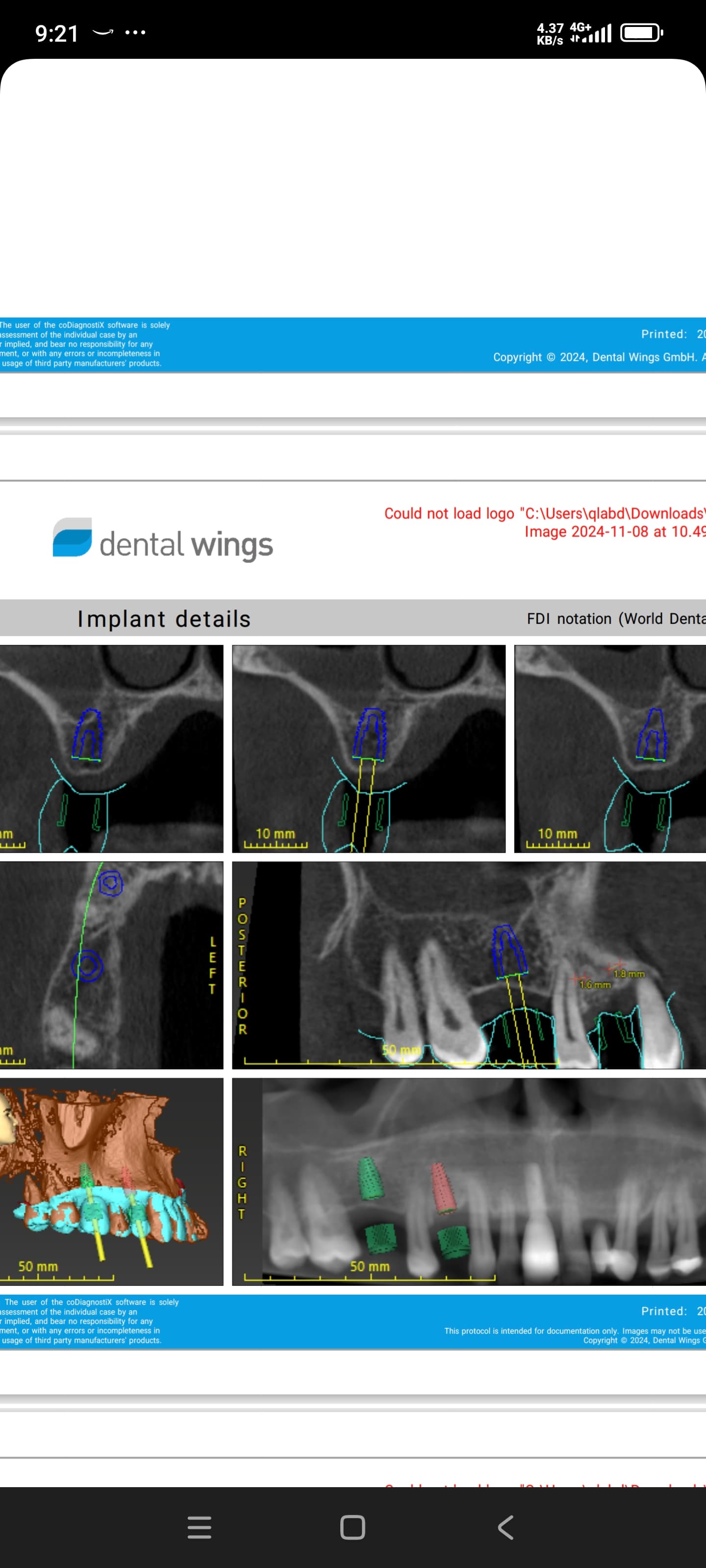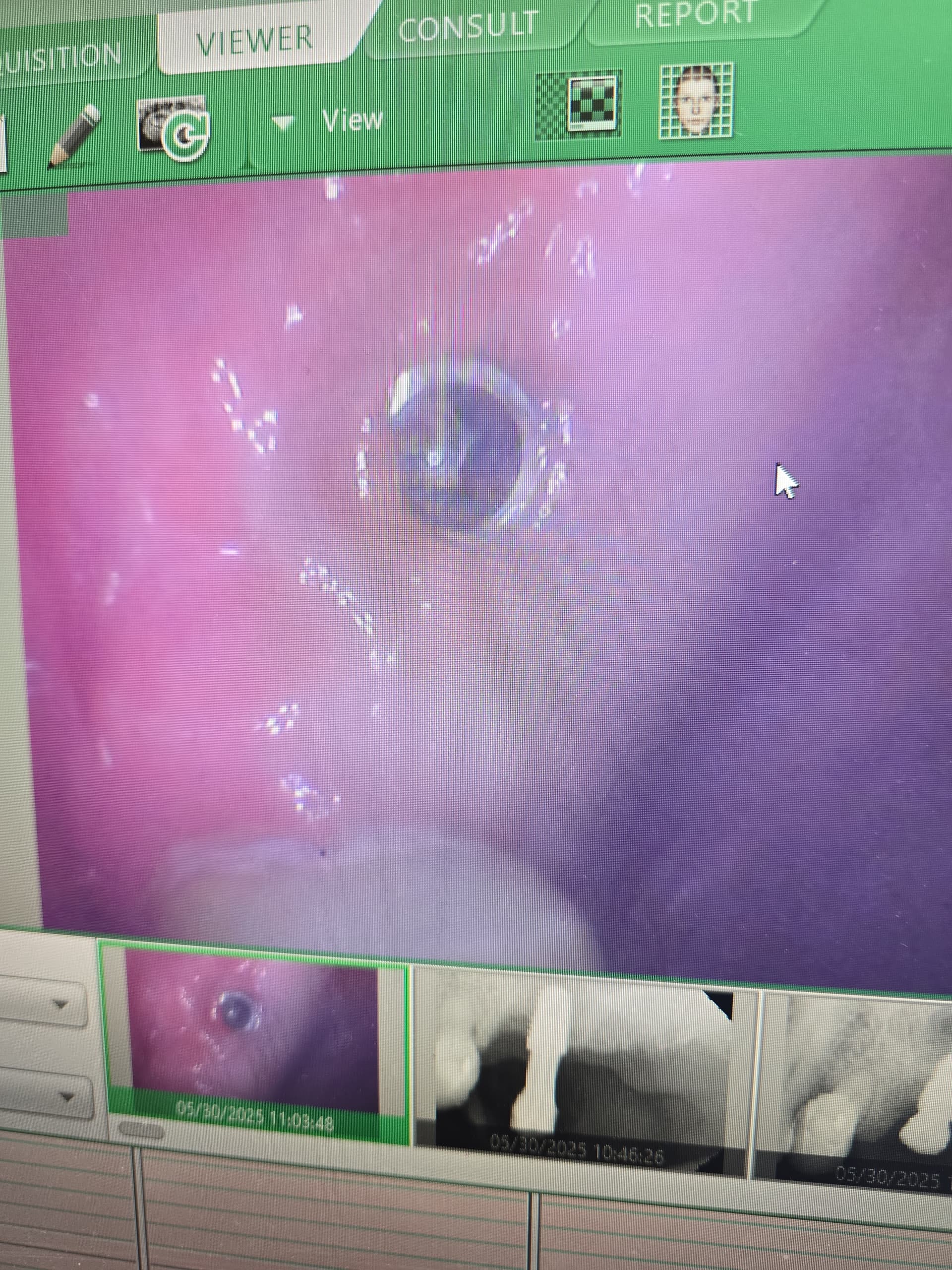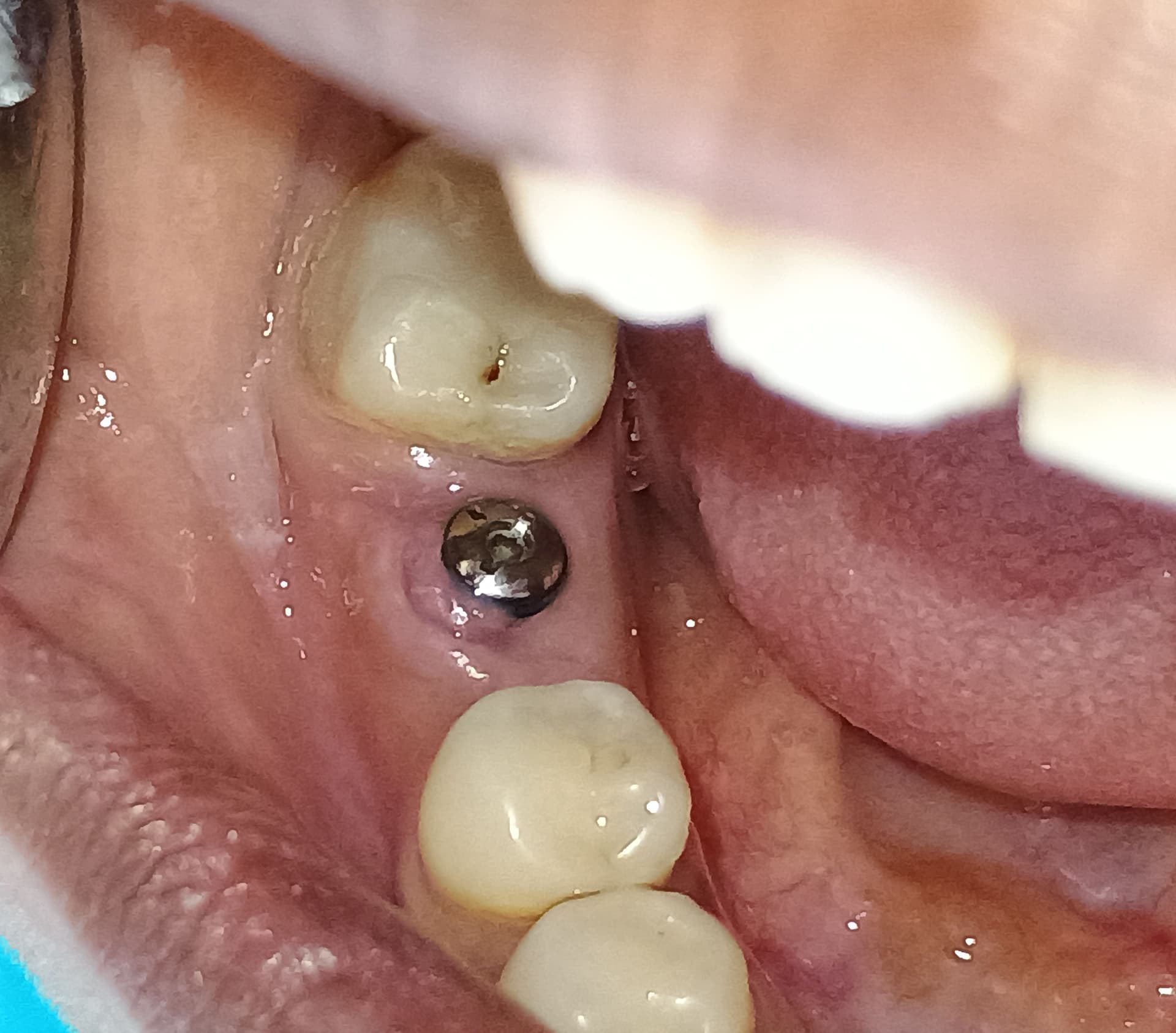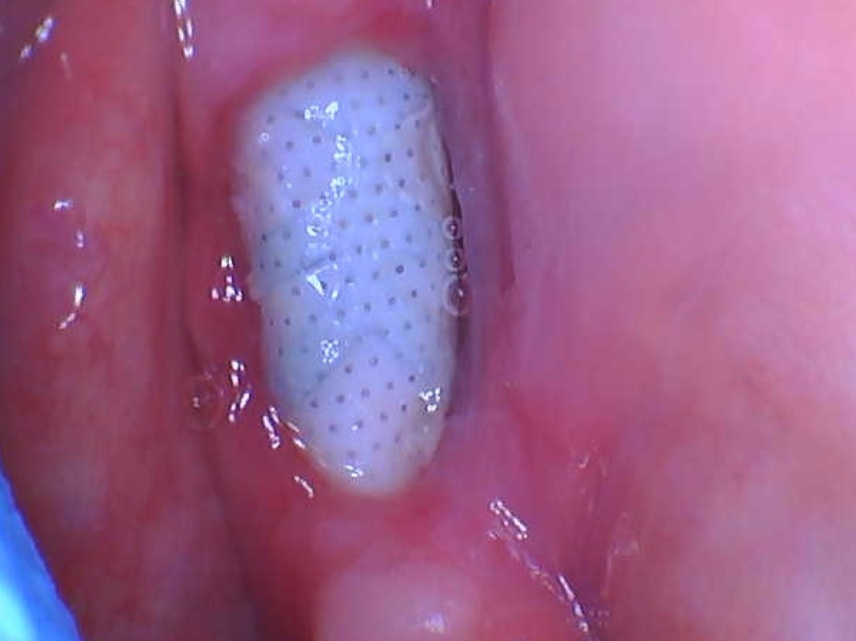Liquid PRF for TMJ injection with Intra-Spin?
I have a patient with an acute perforation of the left TMJ. Steroid injection produced modest improvement. I’ve read an article that states good results with a liquid PRF intra-articular injection. I have an Intra-Spin system for creating PRF plugs. No information about using the unit for injectable liquid PRF. I assume modification of the centrifuge parameters will be required. Does anyone know of a protocol for creating liquid PRF with the Intra-Spin System?
Thanks.

27 Comments on Liquid PRF for TMJ injection with Intra-Spin?
New comments are currently closed for this post.
miguel
6/12/2019
interesting
ive used PRGF, BTI; for my own shoulder (left slap tear) and worked amazingly. i followed spanish surgeon victor vaquerizo and was honestly healed 100%; time went by and i continued lifting too much weight in the gym and finally had to succumb to the knife, surgery. that was in 2014.
im writing cause am also curious to this use. i have the intrlock centrifuge also.
thanks for posting
Terry
6/12/2019
700 RPM for 3 minutes
Dok
6/12/2019
Show me the research.
Multiple double blinded randomized controlled studies that show safe and effective results. Even better, a meta analysis ( Cochrane ) that demonstrates the same. Toys abound in dentistry. My back room is full of them.
Chris
6/12/2019
You needs mri andCT scan first to establish the degree of injury. A perforation is not a cute. It is usually an element of OA over the long term . This patient needs an arthroscopy in the first instance. PRF may only give you a temporary resolution if symptoms. If there is gross cortical erosion she will likely require a replacement ideally.
Louis
6/13/2019
Your response indicates you are perhaps not a seasoned TMD practitioner. While perforations are the end result of chronic disc displacement. ALL perforations are acute. When the disc perforates, symptoms often markedly increase. Most perforations resolve over time. No surgery needed. Steroid injections often result in significant improvement and no need for additional treatment. I'm exploring accelerating the healing process for PRF.
Thanks.
LG
Chrus
6/14/2019
No I am an arthroscopist. I see inside the joint all the time. I am a seasoned practitioner and a qualified surgeon sub specializing in TMJ. Disc perforations are not acute. They are a Wilkes v end stage. You can barely diagnose a perforation on a mri let aline a ct scan. If she has crepitus which indicates a probable perforation that is long standing. You can get acute posterior tissue tears but generally speaking perforations are not acute. See picture on my website tmjsurgeon.co.nz
You are obviously not a surgeon and have never seen inside a TMJ.
Richard Miron
6/12/2019
You can definitely use PRF for this and there has been some published literature on the topic.
https://www.ncbi.nlm.nih.gov/pubmed/30231809
We also teach the techniques in our courses with Professor Carlos Mourao who's an oral maxillofacial surgeon and practices the technique himself. There are videos in the course presented from him if you are ever interested to learn the technique.
I would utilize a protocol of 1500 RPM for roughly 3 minutes. Whoever recommended 700 RPM is too low as the cell layer separation is not adequate. That's also on a different centrifuge (the IntraSpin has a smaller rotor and the RPMs need to be adjusted accordingly). Please see the results from our recent studies.
Miguel
6/12/2019
Thank you. looking fwd to review
Louis
6/13/2019
Hi Doc:
Where are the "results from our recent studies"
Thanks.
LG
Miami
6/12/2019
If you want to make a liquid version,, simply use a testtube with anticoagulant
With the same anticoagulant used in every single blood donation for blood banks, every day, all over the country and the world
Raul Mena
6/12/2019
We are " Doctors" First lets find out what cause the tear and then provide the Treatment.
How do we expect for the tear to heal if the cause is removed to begin with.
docphil
6/12/2019
700 RPM for 3 Minutes is from Choukroun's protocol for centrifuges that match the specifications of the manufacturer of centrifuge that he uses. That centrifuge has a radius of around 110mm, which corresponds to an RCF (Relative Centrifugal Force ) of around 60. The IntraLock machine is, I believe, just a Hettich centrifuge, EBA 200. See: https://www.hettichlab.com/. The rotor radius on this centrifuge is much smaller, so to achieve a similar RCF as the Choukroun protocol, you need a higher RPM. I believe the Hettich machine has a radius of around 85 mm (you can ask them or measure), which would mean that to achieve an RCF of 60, you need 800 RPM. The 1,200 RPM mentioned above would seem way too high, as that would be an RCF of around 137. But, then again, that comment may have a different definition of liquid PRF. You can play around with RCF on your own, by using this calculator: http://insilico.ehu.es/mini_tools/rcf_rpm.php
Of course, when it comes to PRF, you will get a different number and answer from everyone, because there many different liquid PRF protocols floating around. Even Choukroun has an i-PRF and a Liquid A-PRF. Worst of all, all the leading researchers in the field, now sell their own centrifuges, so there is a serious conflict of interest in every thing you read about PRF. It's extremely difficult to get any objective information in the PRF field, and the studies display a complete lack of uniformity when it comes to basic definitions, e.g. many studies don't even reference an RCF. Amazingly, someone above said to use anticoagulants in the tubes, which is for PRP, and not PRF. Of course, when you click on the link for his name, you will get to a page advertising PRP courses! Well you get the point...
Richard Miron
6/12/2019
This is precisely why one should follow published literature in high impact peer reviewed journals. The low speeds of 700 rpm for 3 minutes are not effective for accumulating platelets.
docphil
6/12/2019
Thanks for the comment, and thanks for your research, which incidentally has vastly improved the conversation around PRF. Much appreciated.
As for the 700 RPM, I honestly don't understand either the point of such a low speed, though your paper does say it provided the "highest concentration of leukocytes/platelets". Anyway, there is another PRF Liquid protocol which is 1,200 - 1,300 RPM for 5 Minutes (around a 175 - 210 RCF on a 110mm centrifuge), which has provided me with better results. 1,200 RPM on an IntraLock machine, if my measurements above are correct, is around 140 RCF. Are you saying that 140 RCF is the more appropriate setting to use for liquid PRF?
I'll have to download your paper to see how the horizontal centrifuge changes these numbers. Seems interesting, but I question whether the differences between all these centrifuges are really clinically significant statistically, assuming a similar RCF is used across the board. Certainly, the clinical experience over the last years has shown that most of the protocols work well enough.
Louis
6/13/2019
Great information.
Thank you.
Ed Dergosits DDS
6/12/2019
When you ask about making PRF for injection I assume you want to make i-PRP. One cannot inject the fibrin. 1300 for 3 minutes should yield I-PRP. I spun some blood today at those settings and the result was fibrin plugs. I was very surprised.
Miami
6/12/2019
If you want to make a liquid version, simply use a testtube with anticoagulant. Use your usual times and speeds to separate the layers for your particular machine. Call it whatever name you want (PRP, iPRF, BioPRF, Liquid CGF, ......)
A test tube with the same anticoagulant used in every single blood donation for blood banks, every day, all over the country and the world. For about $1 from BD.
docphil
6/13/2019
Spinning blood in a tube with anticoagulant (PRP technique) is not the same as spinning blood in a plain tube without anticoagulant (PRF technique). The chemistry is obviously different and the result will be different.
Yes, both PRP and PRF are both protocols for platelet concentration, and share similarities, but the protocols are different (PRP is also double centrifugation method, while PRF is single) and hence the results will certainly differ.
Now, I'm not saying that either technique is better than the other. There are many studies comparing the results of PRP vs PRF. There are benefits to each, and drawbacks. Doctors can make their own choice as to which technique to use, but they are certainly not the same.
Ultimately, PRF, which uses tubes without anticoagulant, is much easier for most offices, because proper PRP technique also requires a 2nd centrifugation process in other tubes. Some clinicians also advise a mixing with a thrombin additive for best results. PRF doesn't require any of these extra steps. It's just done in one spin cycle with a plain tube WITHOUT any anticoagulant. And yes, BD sells the tubes you need for whatever technique you choose.
Miami
6/13/2019
Wow big long answer that doesn’t tell any of us anything (other than you are a smart guy) ?????
John T
6/13/2019
Where is the evidence that it is possible to repair a perforated meniscus by injecting PRF or any other material into the temporomandibular joint space? Answer: there is none.
This is placebo surgery.
Chris
6/14/2019
I agree
osteoman
6/13/2019
There is so much anecdotal mis- information being disseminated about Alphabet City. Someone should write a retrospective paper and we would probably discover it's all the same thing. All just generic names. When you say I need a Band-Aid what do you get?
Ruth
6/13/2019
I use dr Garg’s protocol for liquid PRP ! He discovered PRP with dr Marks and has numerous publications on the topic
1100 rpm for 4 minutes . It has such an amazing healing
You can ask his direct advice On www.implantseminars.com
Louis
6/13/2019
The PRF (or the passage of time) will not "repair" a perforation, but the symptoms usually resolve over time with out any surgical intervention.
Basic TMD information.
LG
Chris
6/14/2019
I agree that the symptoms may resolve over time but these conditions are not cured. They are managed and can return. There is no mention here of the size, of the perforation, the medical history, the parafunction habits the relevant investigations nor an accurate diagnosis. An mri is mandatory to diagnose disc problems and is the minimum required. Tmd is not a diagnostic term if you look at the literature. It is a crap term used by people who don’t know much and usually trained in units which are purely dental with no medicine or orthopedic training involved. There is only anecdotal evidence for prf with no long term peer reviewed studies.
You may be right that this is worth a try as it is minimally invasive with little morbidity but is it is definitely not a panacea.
Dr. I Erwood
6/19/2019
PRF Silicone Coated Tube (promotes coagulation)
Injectible PRF Non Silicone Coated Tube
No anti-coagulant required
Louis
6/19/2019
Dr. Erwood:
Thanks for the information.
Where may one purchase these tubes for liquid PRF.
What about these tubes: http://bocadentalsupply.com/prf-tubes-yellow-liquid-prf-off-label-plastic-10-ml-no-additive-100-tubes-per-box/














